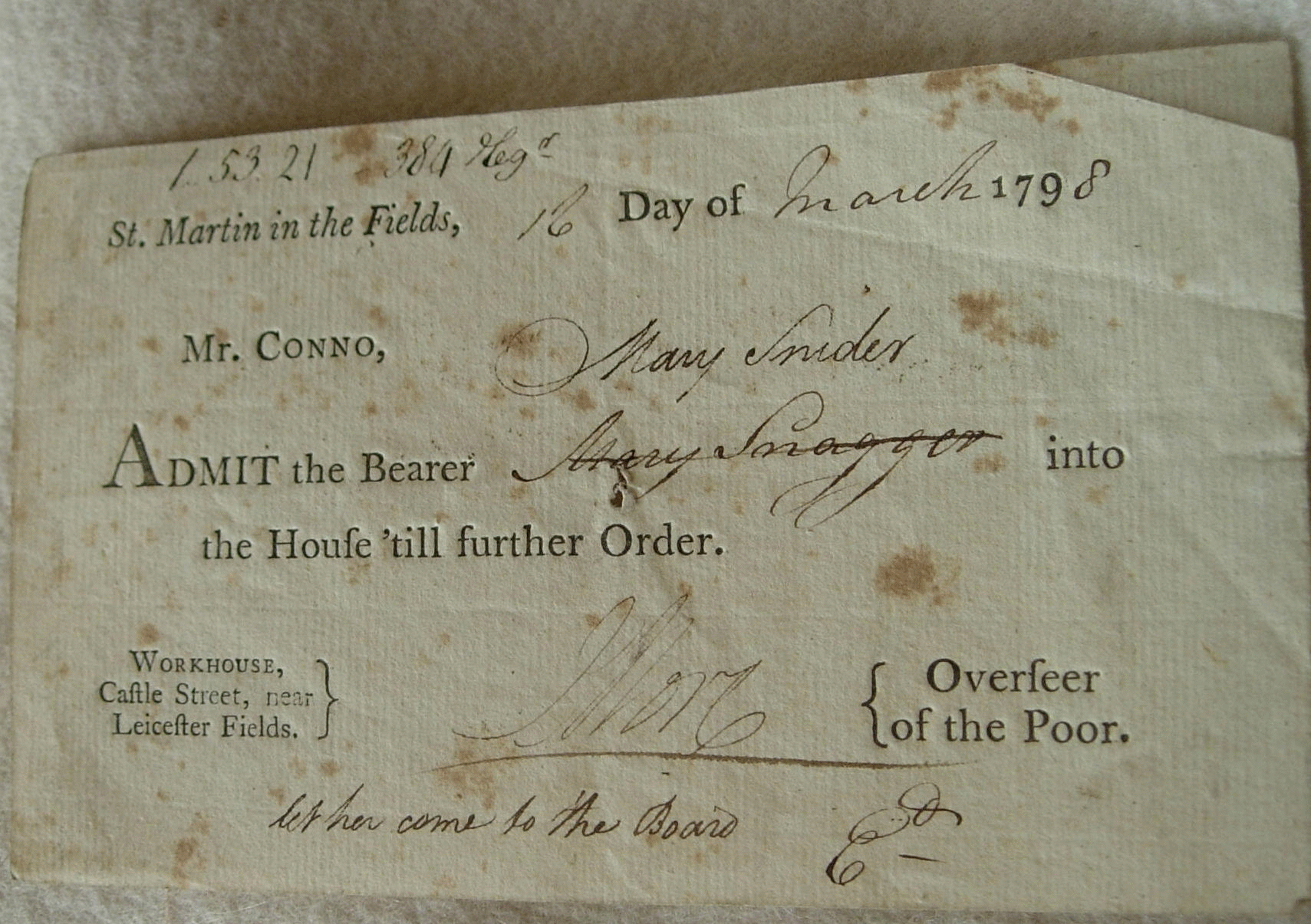
The ESRC Project I: The Lives of the Poor in the West End of London, 1725-1824
Director |
Director |
Research Associate |
Research Assistant |

St Martin's Workhouse admissions ticked for Mary Snider, 16th March 1798.
Mary Snider was admitted to the workhouse on the 17th March 1798. The numbers on the top left of the ticket refer to the fact that this was her first time of entry, that she was 53 years of age at admission, and that she was admitted into Ward 21. Her entry is on page 384 of the relevant admissions register. Snider stayed only 13 days and, following an examination into her case by the Governing Board (the Churchwardens and Overseers of the parish) on March 21st, she was discharged on 30th March 1798. Mr Samuel Conno was the Workhouse Steward. Conno had been appointed in 1795 following the dismissal of his predecessor for incompetence 'in consequence of his Age & Infirmity'. Conno died in April 1801. (Westminster Archives Centre, F4022/384, F2075/95, 207)
This project, that had ESRC funding between January 2004 and March 2007 has aimed to reconstruct the lives of the London poor using poor law records. It is not, therefore another analysis of the mechanics of poor relief. We have set out to study the relationship between life-cycles, poor relief and survival strategies of the labouring poor in Europe's largest city between 1724 and 1824. To make this practical we are confining our research to the parish of St. Martin's-in-the-Fields, Westminster. This area had a population of some 30,000 throughout this period and has particularly good records. This project continues and builds on Jeremy Boulton's earlier work on the parish, exploiting records that are uniquely revealing in their scope and coverage. By dove-tailing findings from Boulton's previous and forthcoming studies, the project will provide information covering over more than two centuries, a length of time quite unique for the study of a large English city, life-cycles and welfare policiesHistorians have suggested that a majority of people would expect to come into contact with communal relief at some point in their life cycle and certainly the overwhelming majority of the lower forty per cent of the population could expect to come into contact with the poor law, particularly if they survived beyond the age of about fifty and not so infrequently before then. Most of the children of the poor who lost one parent and whose surviving parent did not remarry rapidly could also expect to be in contact with the poor law. An analysis of the poor of St. Martin's therefore enables us to develop an unprecedentedly detailed analysis of the relationship between the life-cycle of its poor and their welfare. For more information, click here.
The work is now being continued by a grant from Wellcome to examine mortality and causes of death in the parish between 1747 and 1824, using records that give such information for each individual. For more information about the Wellcome Project, click here.
This website is maintained by jeremy.boulton@ncl.ac.uk